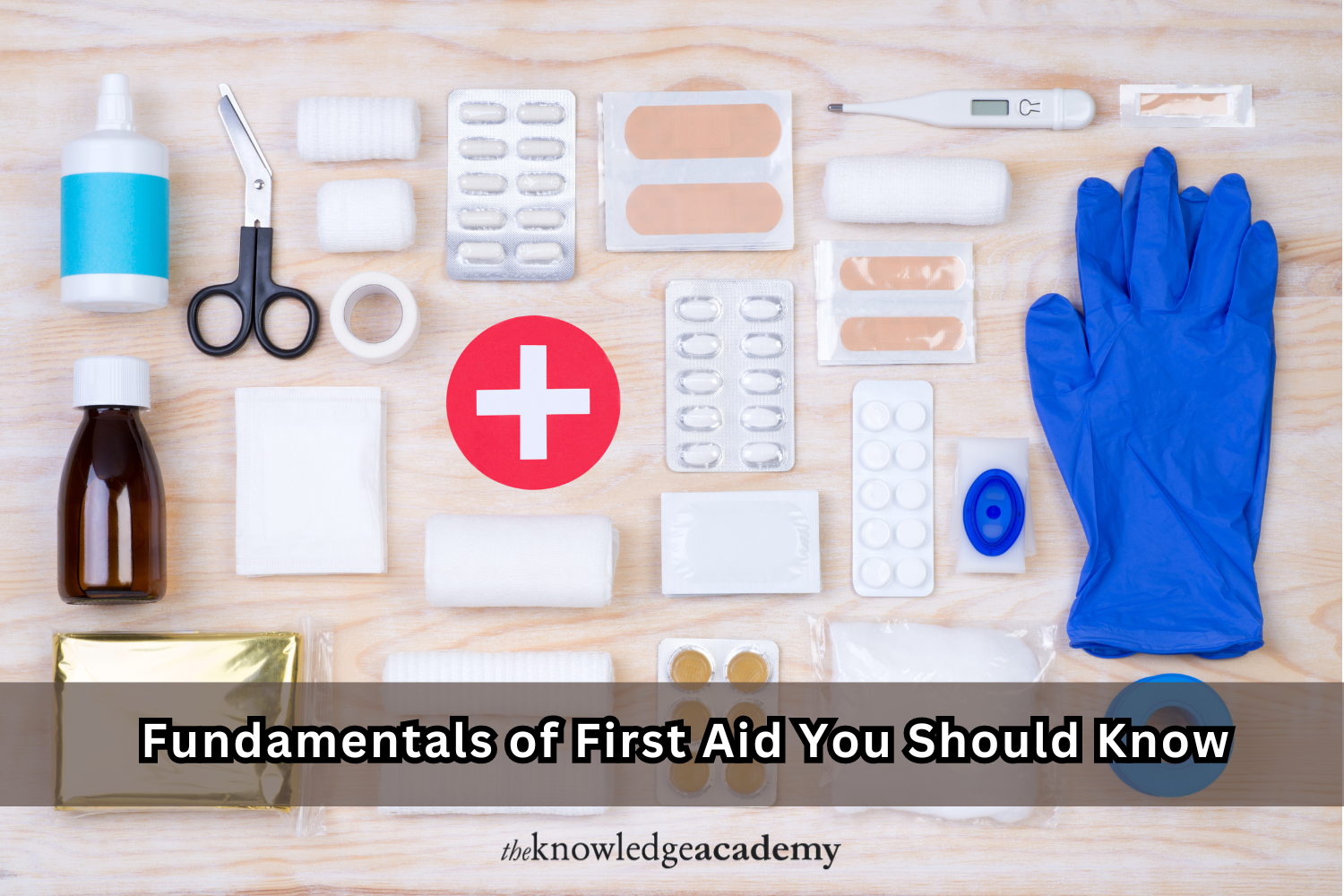
Understanding the basics of first aid is essential to preparing for crises. More than the ability to treat wounds, first aid matters; it is the confidence to respond quickly and efficiently when the lives of others are in danger. Responding during the initial moments of any accident can save lives.
You might be familiar with the Health and Safety Course, which is necessary to ensure your safety in the workplace or personal life. But have you ever considered What is First Aid beyond the basics you learnt years ago? Let us refresh your knowledge of first aid, which can assist you in an emergency with more confidence.
Table of Content
- What Is First Aid?
- The Importance of First Aid Knowledge
- Basic First Aid Kit Essentials
- Common First Aid Procedures Everyone Should Know
- When to Seek Professional Help?
- Conclusion
What Is First Aid?
First aid refers to immediate help given to an injured or sick person during the initial minutes after an accident until medical professionals arrive. It’s about using the limited resources you have within yourself to get things steady again and avoid them from getting worse. This could involve anything from applying pressure to a wound to doing CPR or simply calming someone down until professional help arrives.
First aid also covers fewer significant injuries, including cuts, burns, or fractures. Quick and effective treatment is crucial to saving lives, preventing the situation from getting worse, and hastening the healing process.
The Importance of First Aid Knowledge
Emergencies can strike at any moment and in any place. In these situations, having first aid training allows you to respond competently and rationally, saving lives. First aid skills are lifesaving, whether on the job or at home.
First aid training can alleviate the anxiety and doubt that frequently accompany such circumstances. It prepares you to respond with assurance and clarity while calming down the victim and helping them receive medical treatment faster.
Basic First Aid Kit Essentials
It is always essential to have a fully stocked first aid kit to be prepared for any emergency. Every first aid box should include these basic items:
- Adhesive bandages of different sizes
- Sterile gauze pads and adhesive tape
- Antimicrobial wipes or solutions
- Tweezers for wounds
- Scissors for cutting
- Disposable gloves
- CPR face shield
- Pain relief medications
- Instant cold packs
- Thermometer
You should also have a first aid manual in the box if you need to refer to the instructions. Always check your kit routinely and replace any expired or outdated goods.
Common First Aid Procedures Everyone Should Know
These are the basic first aid techniques that everyone should know:
Cardiopulmonary Resuscitation
If a person’s breathing or heartbeat stops, the first thing to do is Cardiopulmonary Resuscitation (CPR). A combination of chest compressions and rescue breathing increases blood and oxygen circulation.
The Heimlich Manoeuvre
When a person is choking, the Heimlich Maneuver is performed to clear their airway of any obstruction. Pressing the abdomen helps push the object out and revive breathing.
Treating Cuts and Scrapes
Apply antibiotics to the wound and cover it with a sterile bandage to avoid infection. Exert pressure by pressing to stop the bleeding of more extensive wounds until aid comes.
Burn Treatment
To treat minor burns, run cool water over the area for 10 minutes and cover it with a sterile bandage. If the burns are more serious, seek emergency medical attention.
Dealing with Sprains and Strains
Elevate the affected limb, place ice to minimise swelling, tighten using an elastic bandage, and rest the affected area.
When to Seek Professional Help?
However, first aid should never be used in place of expert medical advice. It is important to know when to contact for specialist medical assistance. One should seek emergency services right away if someone is unconscious, finds trouble breathing, or is in great discomfort. Likewise, it is always advisable to err on the side of caution and consult a specialist if you are not sure about the degree of the illness or damage.
Conclusion
Everybody has to learn first aid techniques. Knowing first aid techniques is invaluable when managing a minor cut or responding to a life-threatening incident. Consider The Knowledge Academy free resources to acquire the crucial knowledge of saving lives. Remember, you are not learning for yourself; you are learning to ensure the safety of others.



